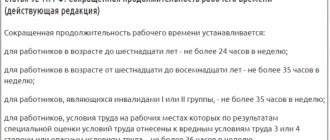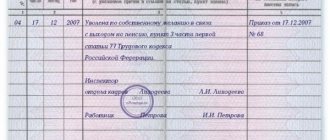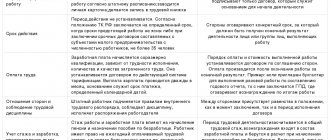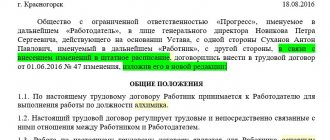All employers and employees enter into collective agreements. This procedure is provided for by law. This is a bilateral labor agreement between the head of the company and the chairman of the trade union committee. If there is no trade union at the enterprise, then an authorized person - a representative of the workers - acts on behalf of the mercenaries.
Despite the fact that the law has not specified a mandatory form for such a document, it must be drawn up correctly. Our article will help with this. Here you will learn how to draw up a collective agreement, whether changes can be made to it and for what purposes it is needed.
Appearance of the document and description of its fields
In appearance, the collective agreement of employees is similar to a regular employment contract. It is compiled on several A4 size pages. Has a title page, general and final sections. Well, it definitely contains the signatures of the parties.
The law will not determine the specific structure and form of such agreements. According to general rules, a collective agreement must contain the interests of two parties - the enterprise and the hired staff. The document includes general conditions for payment, information about the protection of workers, their rights, obligations, and the responsibilities of managers and hired workers.
When drawing up an agreement, all information is distributed into certain sections, so page fields are practically not used. We’ll look at what the content should be in more detail below.
Changes and additions to the collective agreement
Within the framework of labor relations, a situation may arise when the current collective agreement loses its relevance in certain aspects for one or both of its parties. In this case, the parties do not have to wait until the collective agreement expires. Instead, any of the parties can initiate additional collective negotiations to amend the existing document or add new clauses to it.
In general cases, the procedure for conducting collective bargaining in this case remains almost the same as when concluding a collective agreement. However, there are a number of differences. Thus, a collective agreement may itself contain principles by which it can be amended and supplemented.
The collective agreement cannot be canceled. Neither of its parties can do this, even with the consent of the other. At the same time, it is allowed (if it is not directly prohibited by the collective agreement) to make changes to it up to such a state that the agreement itself ceases to contain any significant standards.
Content
The collective agreement in 2020 has changed little from its previous versions.
The content should include the following:
- Payment Information. The terms and conditions are detailed here.
- Information about benefits and compensation: conditions for their payment, amounts and terms.
- Conditions and need for advanced training of employees, information about their training. Most developed companies have this practice: when a newcomer enters a lower position, he is sent to courses or trained within the company. All this is necessary to retain personnel, attract employees and improve their level of training.
- Information about vacations: the procedure for providing basic, additional, unpaid days.
- Information on the provision of benefits to employees.
- Section on labor protection.
- Determination of working hours and rest.
- Guarantees for workers.
All information contained in the collective agreement is conditionally divided by lawyers into the appropriate categories: mandatory, organizational and regulatory. When developing a document, it is important to use the Constitutional rules and the Labor Code of the Russian Federation in order to create a competent document, without violating the rights of workers. A collective agreement is concluded only if it does not contain conditions that worsen the situation of workers. If during the verification process or in the event of controversial cases, at least one violation is discovered that is not in favor of the mercenaries, the contract is declared invalid.
How to draw up a collective agreement in 2020: sample
Labor legislation does not provide for the mandatory conclusion of a collective agreement in each organization or individual entrepreneur. In order to conclude this agreement, the employer or employees must contact the other party with a proposal to begin collective negotiations to prepare a draft agreement and its conclusion.
In this case, the other party has the obligation to begin negotiations and, no later than 3 months, conclude a collective agreement on the agreed terms.
A sample collective agreement for a budgetary institution or commercial enterprise has a standard structure - the main requirements for it are described in Article 40 of the Labor Code of the Russian Federation.
Features of compilation
So, it is clear that the collective agreement should be developed and formed with an eye on the Labor Code and other labor law standards. The main assistant here will be Article 40 of the Labor Code. There is the basic concept of a collective agreement, a description of the parties who can enter into it, as well as ways to resolve controversial issues.
The Labor Code states that a collective agreement can be concluded by an enterprise or its branch, representative office and other separate structural units. The organization shifts all actions related to the preparation, creation, conclusion and signing of a document to a specific official. The interests of the employees should be represented by a professional person nominated by a general vote, who is trusted by the team.
After creating the text of the collective agreement, all its participants are obliged to familiarize themselves with the document, discuss its contents, and propose any changes if necessary.
Representatives of both parties will negotiate all the nuances of the agreement. If the terms of the collective agreement suit everyone, then authorized representatives sign the sheets.
The law gives the parties the opportunity to discuss contractual terms for three months. But, if, despite the long period of development of the document, all issues could not be resolved, an additional protocol of “disagreements” is created. It describes controversial situations and offers solutions.
The terms of the collective agreement must suit all its participants. Only after the settlement of controversial issues, the authorized persons sign the document. Situations cannot be ruled out when all the deadlines for the formation of a collective agreement have passed, it is time to put it into effect, but the parties still cannot reach unanimity on some points. In this case, the law allows you to sign an agreement, but with a protocol of disagreements. In this case, litigation is inevitable.
The collective agreement is considered to come into effect from the date of its signing. And it is usually valid for three years. Practice shows this is the validity period of such agreements.
The final stage of concluding a collective agreement is its registration. This is a notification procedure carried out by the authorized labor body.
Collective agreement (general form)
__________________________________________________________ (full corporate name of a legal entity or surname, name, patronymic of an individual entrepreneur) Representative of the employer - Representatives of employees - manager or _________ ___________________ person authorized by him (signature) (initials, surname) _________ ___________________ _________ ___________________ (signature) (initials, surname) ( signature) (initials, surname) _____________________________ _________ ___________________ (job title) (signature) (initials, surname) “__”_____________ ___ city “__”______________ ___ city (seal)
COLLECTIVE AGREEMENT N ____ for ______________ year(s) (general form)
G. ______________________
GENERAL PROVISIONS
This Collective Agreement (hereinafter referred to as the Agreement) is a legal act regulating social and labor relations in ____________________________ and establishing mutual obligations between employees and the employer represented by their representatives in accordance with Articles 40 - 44 of the Labor Code of the Russian Federation.
1.1. The parties to the Agreement are: _____________________________________ _________________________________________________________________________, (full corporate name of a legal entity or Last name, first name, patronymic of an individual entrepreneur) hereinafter referred to as the employer, represented by ______________________, acting on the basis of _____________________ and employees represented by their representatives: _______________________________________________________________________, (last name, first name, patronymic ) ________________________________________________________________________, (last name, first name, patronymic) _________________________________________________________________________, (last name, first name, patronymic) hereinafter referred to as employees acting on the basis of ____________________.
1.2. The subject of the Agreement is the mutual obligations of the parties on issues of working conditions, including remuneration, employment, retraining, conditions for the release of workers, working hours and rest periods, improvement of labor conditions and safety, social guarantees, and other issues determined by the parties.
PAYMENT AND LABOR RATING, GUARANTEES AND COMPENSATION
2.1. In the area of remuneration, the parties agreed:
2.1.1. Pay wages in cash (rubles).
Upon written request from the employee, another form of remuneration (in kind) is possible. In this case, the share of wages paid in cash cannot be lower than 80 percent of the total wages.
2.1.2. The terms of remuneration determined by the employment contract cannot be worsened in comparison with those established by the Contract.
2.1.3. For the period ____________ (specify the period) of mastering new production (services, products), the employee must maintain his previous salary.
2.1.4. Birthday celebrants (45, 50, 55, 60, 65, 70 years old) should make a lump sum payment depending on their length of service with the employer:
- up to one year - half the official salary;
— from one to five years — one official salary;
- over five years - two official salaries.
2.2. In the field of labor standards, the parties agreed:
2.2.1. Introduce, replace and partially revise labor standards after the implementation of organizational and technical measures that ensure an increase in labor productivity, as well as in the case of forced use of physically and morally outdated equipment.
2.2.2. An extraordinary revision of labor standards may be carried out based on the results of workplace certification.
2.2.3. Established labor standards cannot be revised if individual workers achieve a high level of production (rendering services) through the use of new work methods and improvement of workplaces on their initiative. The list of labor standards in force at the time the parties signed the agreement is presented in Appendix No. ______.
2.2.4. Employees working on the basis of apprenticeship contracts may have production standards reduced by _____ percent for up to ___ months.
2.2.5. The employer provides:
a) tariffication of work and assignment of qualifications to workers, specialists and employees according to the current Unified Tariff and Qualification Directory of Work and Professions of Workers, Qualification Directory of Positions of Managers, Specialists and Employees;
b) timely provision of information to employees about the applicable conditions of remuneration;
c) improving standardization and working conditions.
2.3. From January 1, 20__, the basic monthly tariff rate for a first-class worker (employee of the lowest category) is set at no less than ____ thousand rubles. Depending on the financial and economic condition of the employer, social, economic and production factors, the employer has the right to set a tariff rate for first-class workers (workers of the smallest category) that exceeds the base rate.
2.4. The parties jointly ensure in 20___ - 20___ the growth rate of average monthly wages of workers is at least ____ percent higher than the growth rate of average monthly wages in the corresponding region.
2.5. The employer independently establishes a bonus system for employees, which takes into account:
a) production efficiency and improvement of financial and economic results;
b) reduction in injuries in the reporting year compared to the previous calendar year;
c) absence of fatal accidents at work;
d) absence of violations of production discipline, labor protection and safety regulations.
2.6. Payment for downtime through no fault of the employee is made in the amount provided for by the legislation of the Russian Federation.
2.7. The employer's expenses for remuneration of employees and other expenses related to labor relations, for inclusion in tariffs, are formed taking into account:
a) expenses (funds) for labor costs;
b) other expenses associated with the production and sale of products and services;
c) expenses related to the fulfillment of the terms of the Agreement;
d) expenses provided for by other documents regulating relations between the employer and employees.
2.8. Remuneration for managers, specialists and employees is made on the basis of official salaries established in accordance with the position and qualifications of the employee, determined by the employment contract and staffing table.
2.9. A change (increase) in the official salary of a manager is made simultaneously with an increase in tariff rates and the multiple of the official salary established by the employment contract.
2.10. Wages are paid at least every half month, on the day established by the internal labor regulations and the employment contract.
2.11. Delays in payment of wages are a violation of the law, the Agreement and entail the employer’s liability in accordance with the legislation of the Russian Federation.
In case of delay in payment of wages for a period of more than 15 days, the employee has the right, by notifying the employer in writing, to suspend work for the entire period until the delayed amount is paid. The time of suspension of work in case of delay in payment of wages for a period of more than 15 days is paid in the amount of average earnings.
2.12. The introduction and revision of norms and standards, the introduction of new or changes in wage conditions are carried out by the employer, taking into account the motivated opinion of employee representatives, within the time limits provided for by labor legislation and other acts containing labor law norms. Employees must be notified of such changes no later than two months in advance.
2.13. Guarantees and compensations.
2.13.1. The parties agreed that if sent on a business trip, the employee will be reimbursed for travel expenses, rental accommodation, and daily allowance in the following amounts: ____________ rubles.
2.13.2. Guarantees and compensations for employees combining work with study in educational institutions that do not have state accreditation can be established in the following amounts: _________________ ________________________________________________________________________________. (duration of additional leave in calendar days and amount of retained earnings)
2.13.3. The parties agreed that upon termination of the employment contract due to the liquidation (termination of activities) of the employer or reduction in the number or staff of employees, the dismissed employee is paid severance pay in an amount increased compared to that established by the Labor Code of the Russian Federation __________________________ (indicate the amount of the benefit), if the employee worked for employer for at least ___ years.
WORK MODE AND REST TIME
3.1. The working hours and rest hours are established by the employer’s internal labor regulations.
The employer can provide transportation to and from work for employees in remote and hard-to-reach areas, as well as, subject to late finishing of work, by official transport, or provide them with the opportunity for normal rest.
The normal working hours of employees cannot exceed 40 hours per week. With a five-day work week, employees are given two days off, and with a six-day week, employees are given one day off per week.
Breaks for rest and food are provided to employees from ____ to _____ (specify time).
At jobs where, due to production (work) conditions, it is impossible to provide a break for rest and food, provide the employee with the opportunity to rest and eat during working hours. (A list of such work, as well as places for rest and eating is attached to the Agreement.)
3.2. When drawing up shift schedules, the employer takes into account the opinions of employee representatives. Working two shifts in a row is prohibited.
For work whose intensity is not the same throughout the working day (shift), the working day can be divided by the employer into parts on the basis of a local regulation adopted taking into account the opinion of employee representatives.
3.3. If the suspension of work is impossible due to production and technical conditions or due to the need for constant uninterrupted service to consumers, days off are provided on different days of the week in turn to each group of workers according to shift schedules approved by the employer, taking into account the opinion of employee representatives.
3.4. It is not permitted to perform work beyond normal working hours (overtime) in excess of ____ (24) hours per month and ____ (120) hours per year.
3.5. In addition to the annual additional paid leave provided for by the legislation of the Russian Federation, employees are provided with additional paid leave on the following grounds:
a) birth of a child;
b) own wedding, children’s wedding;
c) death of family members (spouse, children, parents, siblings).
The mother (father) or another person (guardian, trustee) raising a child - a student of primary school (grades 1 - 4) is granted an additional one-day paid leave on Knowledge Day (September 1).
The procedure and conditions for granting vacations provided for in this paragraph are established by the employer’s local regulations.
3.6. Annual additional paid leave is provided to employees engaged in work with harmful and (or) dangerous working conditions associated with the adverse effects of harmful factors on human health, in accordance with the current list of industries, works, professions and positions, work in which gives the right to additional paid leave for work with harmful and (or) dangerous working conditions, taking into account the List of industries, workshops, professions and positions with hazardous working conditions, work in which gives the right to additional leave and a reduced working day, approved by the Resolution of the State Committee of Labor of the USSR and the Presidium of the All-Union Central Council of Trade Unions dated 10/25 .1974 N 298/P-22.
The procedure for providing additional paid leave provided for in this paragraph is established by local regulations in agreement with employee representatives.
3.7. Annual additional paid leave is provided to employees with irregular working hours. The duration of vacations is determined by local regulations in agreement with employee representatives.
3.8. At the request of the employee, reduced working hours may be applied, in addition to the cases provided for by current legislation, for:
- women with children under ___ years of age;
— workers who have partially lost their ability to work at work.
OCCUPATIONAL SAFETY AND HEALTH
4.1. The employer provides:
4.1.1. Compliance with norms and rules, carrying out labor protection measures in accordance with the legislation of the Russian Federation and the current regulatory documents of the Russian Federation on labor protection.
Provision of first aid kits at workplaces.
4.1.2. Compliance of the employer's regulatory and technical documentation on labor protection with state regulations containing labor protection requirements.
4.1.3. Timely, but at least once every five years, periodic certification of workplaces for working conditions with measurements of parameters of harmful and hazardous factors, development of measures and adoption of measures to reduce hazardous and harmful factors to standard values.
Checking compliance with labor protection requirements established by the current legislation of the Russian Federation and certificates of conformity of machines, mechanisms and other production equipment, vehicles, technological processes, collective and individual protective equipment, including foreign-made ones.
4.1.4. Informing employees about working conditions in the workplace and compensation for working in hazardous working conditions.
4.1.5. Training workers in safe methods and techniques for performing work, conducting timely briefings and testing knowledge of the requirements of labor protection standards and regulations.
4.1.6. Providing workers engaged in work with dangerous and harmful working conditions, as well as in work performed in special temperature conditions or associated with pollution, with protective clothing, safety footwear and other personal protective equipment, vitamins, medical nutrition, rinsing and degreasing agents.
Work without appropriate protective clothing, safety shoes and other personal protective equipment is prohibited.
4.1.7. Supplying workers with milk or other equivalent food products in accordance with Resolution of the Ministry of Labor of the Russian Federation dated March 31, 2003 N 13 “On approval of the standards and conditions for the free distribution of milk or other products of equivalent value to workers engaged in work with hazardous working conditions.”
4.1.8. Conducting mandatory preliminary and periodic medical examinations of employees.
4.1.9. Analysis of the causes of accidents and occupational diseases, development and implementation of preventive measures to prevent them.
4.1.10. Investigation and recording of industrial accidents in accordance with the current legislation of the Russian Federation and timely reporting of information about accidents to the authorized bodies.
4.1.11. Compulsory social insurance of workers against accidents at work and occupational diseases.
4.1.12. Preventing workers of established categories from performing their job duties without undergoing mandatory medical examinations, as well as in the case of medical contraindications.
4.1.13. Taking measures to prevent emergency situations, preserve the life and health of workers in the event of such situations, including providing first aid to victims.
4.1.14. Fulfillment of instructions from officials of state supervision and control bodies over compliance with labor protection requirements and consideration of submissions from public control bodies within the time limits established by law.
4.1.15. Training of authorized (trusted) persons on labor protection at least once a year, supplying them with regulatory and technical literature, rules and instructions on labor protection.
4.1.16. Retention of employees' place of work, position and average earnings during the suspension of work due to violation of labor protection legislation and regulatory safety requirements through no fault of the employees.
4.1.17. Conducting competitions for the title “Best in the Profession”.
4.2. The employer provides employees with the following benefits, guarantees and compensation in the manner and on the terms determined by local regulations in agreement with employee representatives:
4.2.1. Payment of a one-time benefit in the following cases:
a) the death of an employee at work for each of his dependents in the amount of ____ percent of the annual earnings of the deceased;
b) establishment of disability as a result of injury due to the fault of the employer or occupational disease in the amounts:
- disabled people of group 1 at least __ percent of annual earnings;
- disabled people of group 2 at least __ percent of annual earnings;
- disabled people of group 3 at least __ percent of annual earnings.
In the event of a trial, funds voluntarily paid to the employee in accordance with this paragraph are included in the amount of payments determined by a court decision as compensation for damage and (or) moral damage.
4.2.2. An additional payment to the labor disability pension for a non-working disabled person who received disability as a result of injury due to the fault of the employer, for the children of an employee who died at work.
4.3. Employees undertake to comply with the requirements provided for by legislative and other regulatory legal acts in the field of labor protection, including:
— correctly use personal and collective protective equipment;
— undergo training in safe methods and techniques for performing labor protection work;
- immediately notify your manager or his deputy about any situation that threatens the life and health of people;
— undergo mandatory preliminary and periodic medical examinations.
PROMOTION OF EMPLOYEE EMPLOYMENT.
5.1. The employer pursues a policy of promoting the employment of workers based on increasing labor mobility within the employer itself (including combining professions and positions, internal part-time work), the effectiveness of professional activities and the constant growth of the professional and qualification level of each employee, the development and preservation of human resources in economically viable jobs and promote employment of laid-off workers.
5.2. The employer does not allow unjustified job cuts and ensures:
5.2.1. Retention of the employee's average monthly salary for the entire period of study when sending him to vocational training, retraining and advanced training outside of work.
5.2.2. Providing work in their specialty to graduates of educational institutions of secondary and higher vocational education in accordance with concluded training agreements.
5.2.3. Providing released employees with the opportunity to retrain in new professions before the termination of the employment contract while maintaining the average salary for the entire period of training.
5.2.4. Providing employees who have been warned of dismissal in connection with a decision to liquidate (terminate the activities of) the employer, or to reduce the number or staff, information about sending, in accordance with the legally established procedure, a written message to the employment service authorities about the implementation of appropriate measures to assist in their employment, and also paid time for job search of at least _____ hours per week in the manner established by local regulations in agreement with employee representatives.
5.2.5. Providing a preferential right to remain at work to employees with higher labor productivity and qualifications in the event of a reduction in the number or staff of employees.
5.2.6. Retention of the right to a position not lower than that held before conscription for military service for employees who worked before conscription (entry) to military service, the right to enter work within three months after dismissal from military service, as well as for those who served in conscription, in including reserve officers.
5.3. In the event of termination of an employment contract with an employee who is subject to dismissal due to reduction in headcount or staff, the employer pays him all types of remuneration due to employees and is of a quarterly, semi-annual, annual and other nature, in proportion to the time worked, and also makes the following compensation payments based on compensation agreements in the manner and on the terms determined by local regulations in agreement with employee representatives:
a) for dismissed employees - at least __ times the average monthly salary;
b) employees of pre-retirement age, but no more than two years before the statutory retirement date - payment of a monthly benefit in the amount of __ times the minimum tariff rate, but not lower than the subsistence level in the region until retirement age or the moment of employment;
c) for employees of retirement age - in the amount of at least __ times the average monthly earnings;
d) dismissed employees with two or more dependents - in the amount of at least __ times the average monthly earnings;
e) for dismissed employees whose family has no other breadwinners - in the amount of at least __ times the average monthly earnings.
If an employee has the right to receive several payments provided for in this paragraph, only one payment is made at the employee’s choice.
5.4. At the request of the employee, payments can be replaced by payment for his retraining if the educational institution is located on the territory of the constituent entity of the Russian Federation where the employee lives, but not in excess of the costs determined by the specified payments.
SOCIAL GUARANTEES AND COMPENSATIONS
6.1. The employer, based on its financial capabilities, provides for the provision of the following benefits, guarantees and compensation in the manner and under the conditions established by local regulations in agreement with employee representatives:
6.1.1. Partial, but not less than the subsistence level of the working-age population (or full) compensation of expenses confirmed by relevant documents:
a) related to the burial of deceased employees;
b) related to the burial of close relatives of employees (spouse, children, parents);
c) related to the burial of labor veterans.
6.1.2. Voluntary health insurance and long-term life insurance for employees.
6.1.3. Non-state pension provision and voluntary pension insurance for employees in accordance with the non-state pension provision program adopted by the employer.
6.1.4. Payment of financial assistance:
a) when an employee goes on annual basic paid leave in an amount not less than the minimum monthly tariff rate. Payment on this basis is made no more than once per working year;
b) upon dismissal of an employee at his own request after the establishment of an old-age pension (taking into account the length of service and the period of dismissal after retirement age);
c) upon the birth of a child - no less than the minimum monthly wage rate of a first-class worker;
d) when registering a marriage (if the marriage is registered for the first time) - no less than the minimum monthly wage rate of a first-class worker;
e) upon dismissal of an employee in connection with conscription for military service in the Armed Forces of the Russian Federation, other troops, military formations and bodies or completion of alternative civil service, as well as for the initial establishment of a household for citizens dismissed after completion of military service by conscription or alternative civil service and accepted to the previous place of work - no less than the minimum monthly wage rate of a first-class worker.
6.1.5. Partial or full compensation of confirmed employee expenses:
a) for the maintenance in preschool institutions and health camps of children of workers in whose families the amount of income per family member does not exceed the subsistence level;
b) for the maintenance of disabled children in preschool institutions and the purchase of vouchers for them to health camps;
c) for the maintenance of children in preschool institutions and health camps for families with three or more children.
6.1.6. A one-time payment in excess of the norms established by the legislation of the Russian Federation, in the event of the death of an employee from a general illness or a domestic accident, to the family of the deceased who has presented a death certificate, in the amount of no less than ______ rubles.
6.1.7. Payment of one-time remuneration to employees awarded industry awards and honorary titles.
6.1.8. An increase in monthly compensation for employees on paid parental leave before the child reaches the age of 3 years.
6.1.9. Participation in improving the housing conditions of employees on mortgage lending terms.
6.1.10. Partial compensation for the increase in the cost of food in workers' canteens, as well as the cost of travel to the place of work.
6.1.11. _____________ - percentage discount to employees on the established payment for housing and communal services in the manner and on the terms determined by local regulations in agreement with employee representatives.
6.1.12. Provision of vehicles at the expense of the employer for organized recreation of employees, as well as for cultural events. The procedure and conditions for providing these payments are determined by local regulations in agreement with employee representatives.
6.2. The employer undertakes:
6.2.1. Provide state social insurance for all employees in accordance with the current legislation of the Russian Federation.
6.2.2. Timely transfer funds to the Pension Fund of the Russian Federation.
6.2.3. Freely provide information to employees about the calculation of insurance contributions to the Pension Fund of the Russian Federation, as well as other social funds (Article 15 of the Federal Law of December 15, 2001 “On Compulsory Pension Insurance in the Russian Federation”).
6.2.4. Incur expenses for training, retraining and advanced training of employees in the amount of at least _____ percent of the wage fund, including at least ____ percent of the wage fund for the training of production and technical personnel.
6.2.5. To bear the costs of paying benefits for temporary disability due to illness for the first two days of the employee’s incapacity for work.
6.3. The employer provides social protection for women's labor and maternity, persons raising children, including:
6.3.1. On the eve of non-working holidays (New Year, March 8), women are given additional days off with continued pay based on production capabilities.
6.3.2. Provides women engaged in heavy, harmful and (or) dangerous work, as well as work related to lifting and moving heavy objects manually, at their request, from the moment they become pregnant, with additional paid leave until the due date for maternity leave. The duration of such additional paid leave is determined by local regulations.
6.3.3. Provides __ additional paid days off per month to one of the working parents (guardian, trustee) to care for disabled children and disabled children from childhood until they reach the age of 18 years.
6.3.4. At the request of one of the parents (guardian, trustee) with a child under 14 years of age (disabled child under 18 years of age), including those under his care, or a person caring for a sick family member in accordance with a medical report, establish a part-time or part-time work week.
6.4. Young workers are considered to be young workers and specialists under the age of 30. The employer additionally ensures working conditions and labor protection for women and youth (teenagers), for which:
a) conducts priority certification of the workplaces of women and adolescents based on working conditions;
b) carries out measures to mechanize manual and heavy physical work to ensure standards of maximum permissible loads for women and adolescents;
c) excludes the employment of women and persons under 18 years of age in heavy work and work with harmful and dangerous working conditions.
6.5. An employee who has two or more children under the age of fourteen, an employee who has a disabled child under the age of eighteen, a single mother raising a child under the age of fourteen, a father raising a child under the age of fourteen without a mother, local regulations The act, in agreement with employee representatives, provides annual additional leave without pay at a time convenient for them, lasting up to fourteen calendar days. Such leave, at the request of the employee, can be added to annual paid leave or used separately in full or in parts. Transferring this leave to the next working year is not allowed.
6.6. The employer provides social protection for young people: creates the necessary legal, economic, everyday and organizational conditions and guarantees for the professional development of young workers, promoting their spiritual, cultural and physical development, including:
6.6.1. Promotes advanced training of young personnel.
6.6.2. Approves the regulations on mentoring, assigns mentors to all young employees no later than 6 months from the start of their work and pays mentors a salary bonus of at least ___% of the salary.
6.7. The employer, based on financial capabilities, provides for the provision of the following benefits, guarantees and compensation in the manner and under the conditions established by local regulations in agreement with employee representatives:
6.7.1. Lending to young families from employer funds on long-term terms, issuing loans for the construction and purchase of housing, durable household items, and for paid education in educational institutions.
6.7.2. Providing young workers and their families with the necessary conditions for physical education, sports, and amateur artistic activities.
COOPERATION AND RESPONSIBILITY OF THE PARTIES FOR THE FULFILLMENT OF ACCEPTED OBLIGATIONS
7.1. The relations and responsibilities of the contracting parties in the process of implementing the Agreement are regulated by the Labor Code of the Russian Federation.
7.2. Monitoring of the implementation of the Agreement at all levels is carried out by the Parties and their representatives, as well as the relevant labor authorities.
7.3. The Parties mutually provide available information when monitoring the implementation of the Agreement.
7.4. If the conditions of the employer’s business activities worsen or the employer faces bankruptcy (and, as a result, loss of jobs by employees), by mutual agreement of the parties to the Agreement, the validity of a number of its provisions may be suspended until the financial situation of the employer improves, about which a corresponding document is drawn up.
PROCEDURE FOR INTRODUCING CHANGES, ADDITIONS TO THE AGREEMENT AND RESOLVING DISPUTES ARISING IN THE PROCESS OF ITS IMPLEMENTATION
8.1. Changes and additions to the Agreement are made by mutual agreement of the parties.
8.2. Resolution of disagreements regarding the implementation of the Agreement is carried out in accordance with the current legislation of the Russian Federation.
8.3. Parties guilty of violation or failure to fulfill obligations under the Agreement are liable in accordance with current legislation.
8.4. The employer sends the Agreement with its annexes signed by the parties within seven days for notification registration to the relevant labor authority.
8.5. The Agreement applies to all employees, including those who did not participate in collective bargaining.
8.6. When hiring, the employer is obliged to familiarize the employee with the Agreement.
8.7. The Agreement is concluded for a period of ______ years (no more than three years) and comes into force on the date of signing by the parties (or from the date established by the Agreement).
List of appendices to the Agreement:
Occupational safety action plan.
Cost estimate for labor protection.
List of tariff rates (salaries) of the first category for time workers and for piece workers and tariff coefficients.
The minimum salaries for heads of structural units, specialists and employees, below which the employer does not have the right to set these categories of employees.
A list of labor standards in force at the time the parties signed the agreement.
Lists of industries (works) with difficult, especially difficult, harmful and especially harmful working conditions, for work in which workers have the right to additional payments for working conditions.
Regulations on the procedure and conditions for payment of remuneration based on the results of work for the year.
Regulations on the procedure and conditions for payment of remuneration for length of service.
A list of jobs, professions and positions with hazardous working conditions, work in which gives the right to additional leave and a reduced working day.
Plan of health-improving and preventive measures.
A list of works (productions), during which (when working in which) workers receive free milk or other equivalent food products.
A list of jobs where, due to production (work) conditions, it is impossible to provide a break for rest and food, together with a list of places for rest and meals.
Employer: __________________________
M.P.
Employees: ___________________________________
Changes
The organization or employees may express their will on the need to make changes to the collective agreement. This method is convenient, since you do not have to create an updated agreement. It is enough to create an additional document about the changes.
Additions or changes are printed on a separate document. Moreover, it will be an integral part of the main collective agreement. All new points are also discussed and verified by both parties. And they are approved through the order of the head.
The following information is required in the additional document:
- Number and details of the main collective agreement.
- Name of the employing organization.
- List of parties who are representatives.
- List of changes and their reasons.
- Effective date of the updated paragraphs.
How to fill out a collective agreement?
The collective agreement includes the following information:
- Date and city of conclusion of the contract.
- Information about the parties to the contract: the employing organization and the trade union organization that represents the interests of workers.
- Subject of the agreement.
- Information about the scope of the employment contract within the organization.
- Information that the contents of the contract do not contradict labor legislation.
- A detailed description of additional provisions on working hours, conditions and wages, guarantees and benefits that the employer undertakes to provide to employees in excess of those required by Russian labor legislation.
- Other important information about the essence of the contract.
- Details and signatures (seals) of representatives of both parties to the agreement.
Have you changed your mind about downloading document templates online?
With the KUB service you can save 29 minutes on issuing documents without a single error, and that’s not all. Get KUB - an online service for automating invoicing and other documents.
Start using the CUBE right now 14 days FREE ACCESS
Why is it necessary?
Collective agreements are essential for businesses and workers. The main goals of such documents are to regulate labor relations between organizations and employees.
A collective agreement is an internal act of an organization that helps improve relationships in teams and in the enterprise as a whole. The document spells out compensation and incentive systems for employees. This means that it also serves as an excellent motivator for conscientious work.
Thanks to the collective agreement, all payments and settlements with mercenaries occur on time. That is, the document also disciplines management. Thanks to this document, workers feel protected by law. They are not afraid, for example, of being fired without payment of wages. The contract is the “guarantor” of their rights.
Subject of the collective agreement with the organization/employees
The subject of the collective agreement of the Russian Federation is the mutual obligations of the employer and employees on issues of working conditions, including wages, employment, retraining, conditions for the release of workers, working hours and rest time, improvement of labor conditions and safety, social guarantees. The law does not prohibit the inclusion in the document of any provisions relating to labor relations. However, the collective agreement of a budgetary or other institution (sample 2020) should not contain conditions that limit the rights of employees. If such conditions are included in the agreement, then they are not subject to application (Article 9 of the Labor Code).
The collective agreement in organizations is concluded in writing and comes into force from the moment of signing. The employer can be represented by any person working for him - as a rule, such a person is the sole executive body, the chairman of the collegial executive body.
When concluding and monitoring the implementation of a collective agreement, workers are usually represented by trade unions and their associations and other trade union organizations. However, in cases where the employer’s employees are not united in any primary trade union organizations, at a general meeting (conference) of employees, another representative (representative body) may be elected from among the employees by secret ballot to exercise these powers.
Where is it used?
A collective agreement is necessary for all enterprises and their employees. Since this is internal documentation of organizations. The document also applies between employers without the formation of a legal entity and their mercenaries. For example, an entrepreneur who hires people must ensure the formation of a collective agreement within his company.
It is important to understand that collective agreements of different enterprises differ in content, since each company has its own specifics of labor activity and its own payment terms. For example, a document for an individual entrepreneur, LLC, pharmacy or supermarket chain will vary significantly.










